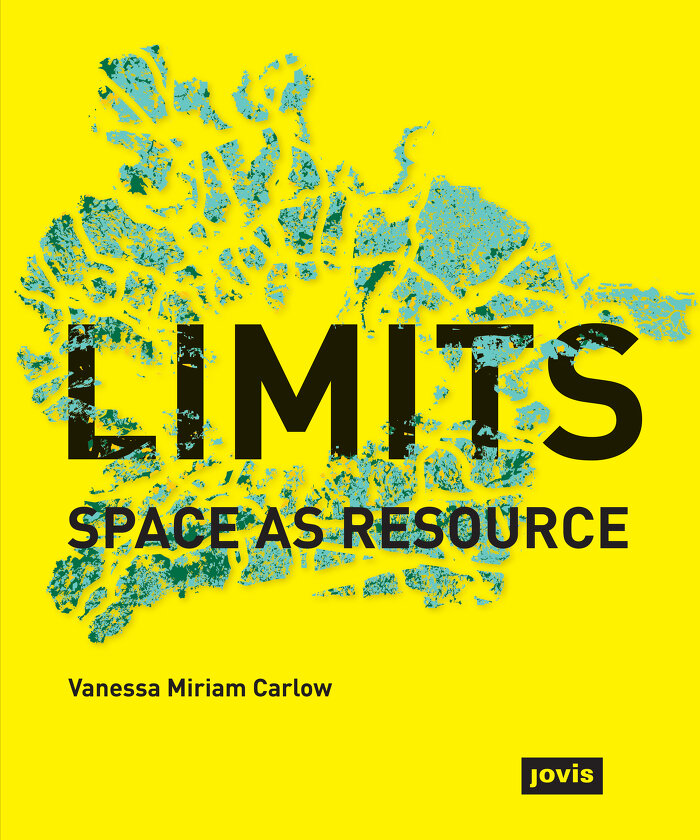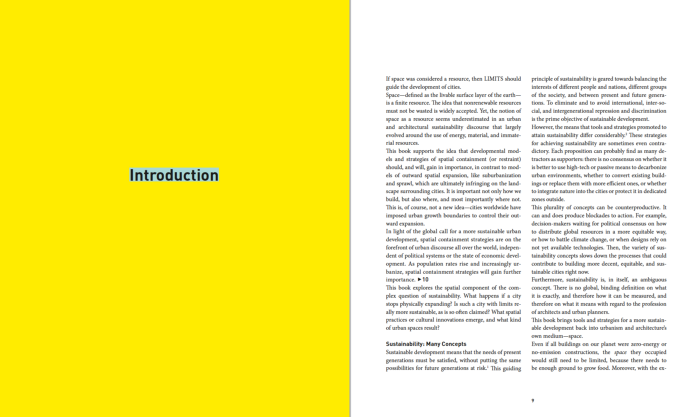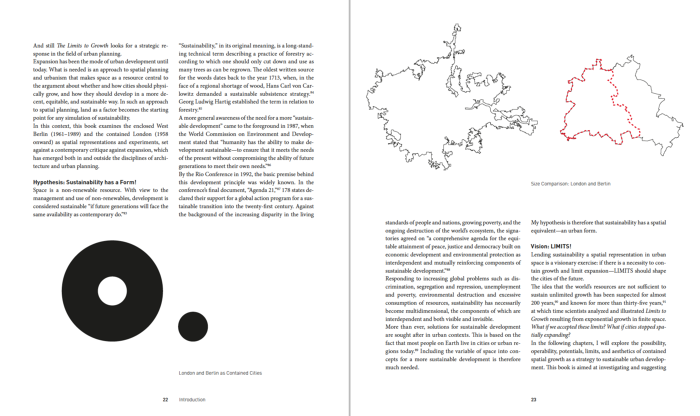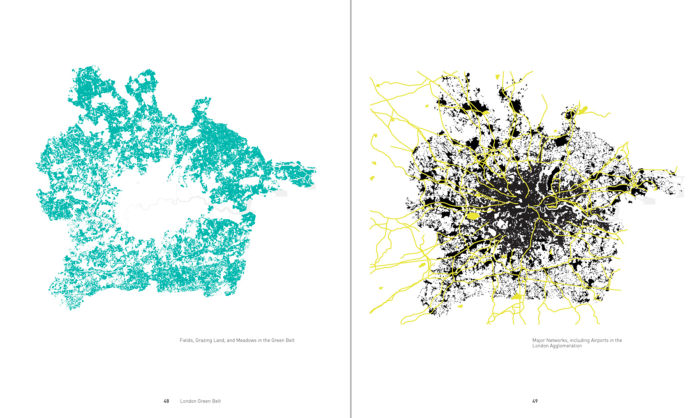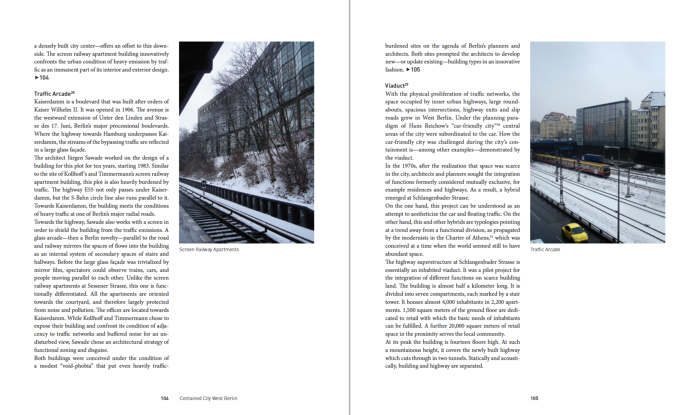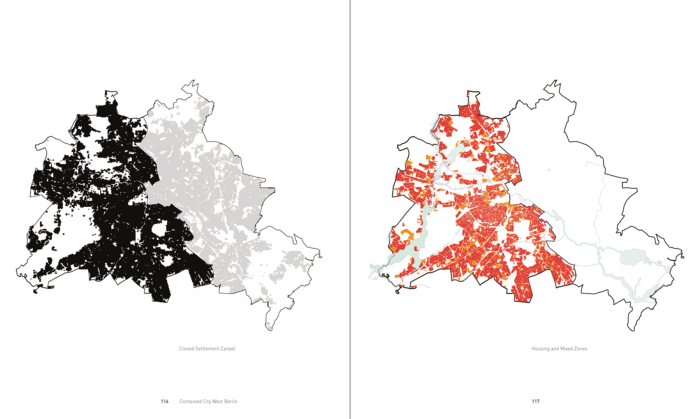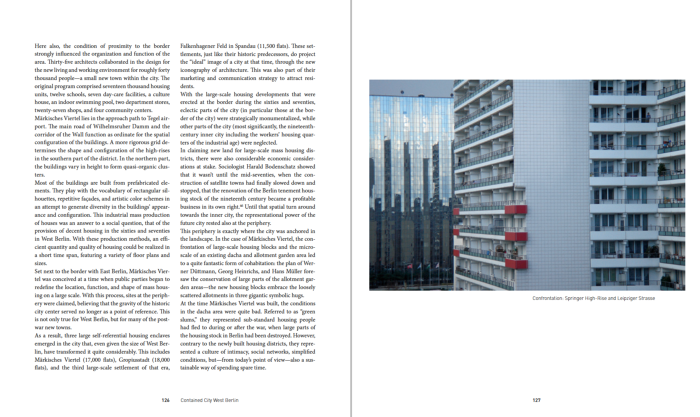Limits
Space as resource
If space was considered a resource, then LIMITS should guide the development of cities.
Space—defined as the livable surface layer of the earth— is a finite resource. The idea that nonrenewable resources must not be wasted is widely accepted. Yet, the notion of space as a resource seems underestimated in an urban and architectural sustainability discourse that largely evolved around the use of energy, material, and immaterial resources.
This book investigates the idea that developmental models and strategies of spatial containment and restraint will gain in importance, in contrast to models of outward spatial expansion, like suburbanization and sprawl, which are ultimately infringing on the landscape surrounding cities. It is important not only how we build, but also where, and most importantly where not. This is, of course, not a new idea—cities worldwide have imposed urban growth boundaries to control their out- ward expansion.
In light of the global call for a more sustainable urban development, spatial containment strategies are on the forefront of urban discourse all over the world, independent of political systems or the state of economic development. As population rates rise and increasingly urbanize, spatial containment strategies will gain further importance.
This book explores the spatial component of the complex question of sustainability. What happens if a city stops physically expanding? Is such a city with limits really more sustainable, as is so often claimed? What spatial practices or cultural innovations emerge, and what kind of urban spaces result?
